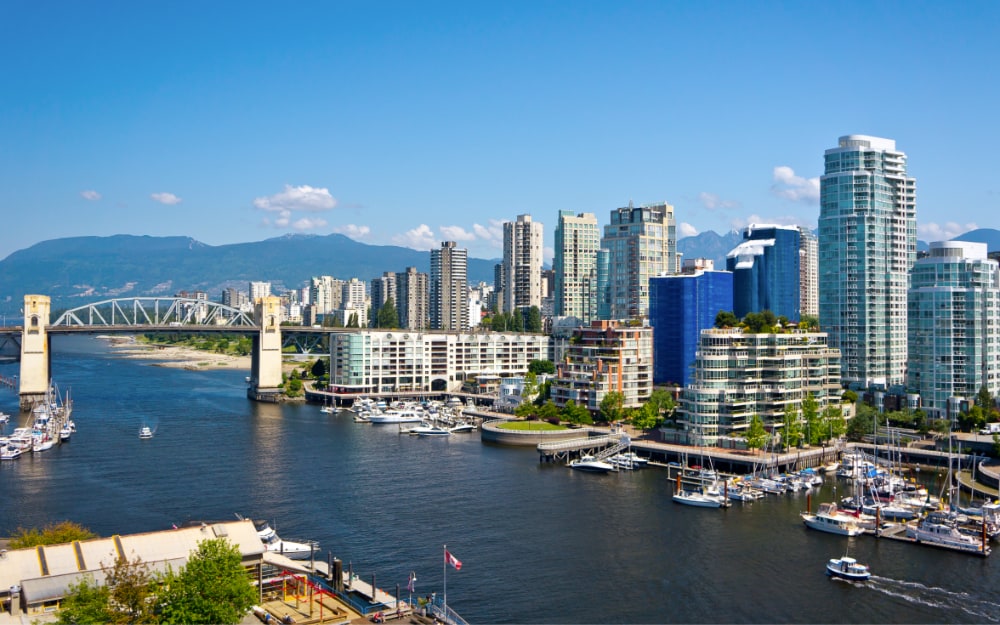Population in Urban Area, now
- World: 203rd
- North America: 26th
- Canada: 3rd
Population in City Area, 2019-09-05
- World: 622nd
- North America: 26th
- Canada: 7th
Vancouver Urban Area Population Graph
Vancouver Population Review
The picturesque, coastal city of Vancouver is positioned between the Pacific Ocean and the North Shore Mountains on the westernmost coast of Canada. While Vancouver city proper only has 600 thousands residents and the urban area only has 2.5 million, it is one of Canada’s most linguistically and ethnically diverse cities. While the city’s growth rate is a bit under Canada’s national average at 4.4%, the city is still expected to grow to 2.9 million people by 2035.
With 5,249 per square kilometer and only 115 square kilometers, Vancouver is a very small city, which is probably why it is also the most densely populated city in Canada and the fourth-most densely populated in North America.
A center of ethnic diversity
Vancouver is a city with ethnically diverse roots. 40% of its residents are foreign-born and 52% of the population identify their first language as something other than English. Following the first settlement of Europeans in the 19th century, Vancouver has been heavily influenced by Japanese, Chinese, Indian, and Italian cultures. This has led to the city having many small, ethnic neighborhoods like Little Italy, Greektown, and the Punjabi Market. Since 1996, experts have found that minorities are three times more likely to live in one of these ethnic enclaves.
A mild climate and an active town
Vancouver has Canada’s mildest weather and snow is extremely rare in the city (except in the mountains). This may be why the city’s population consistently ranks among Canada’s healthiest, and the city itself has been named one of the healthiest in the world. The city’s residents participate in more than 130 organized runs each year, bike continuously through the famous Stanley Park (which is larger than Central Park), and hike and ski in the mountains.
A tourist hotspot
Vancouver’s physical beauty, events, and outdoor activities, all coupled with its lovely climate, make it’s obvious why Vancouver is one of Canada’s most visited cities. There are over 10 million people that visit the city every year. Fellow Canadians make up the highest percentage of visitors to the city, followed by China, Australia, and the U.K. Tourism contributes almost $5 billion annually and provides 70,000 full-time jobs for the residents of Vancouver. Many of these visitors get to the city through the Vancouver International Airport or through the city’s massive port.
A city built for cruises
Vancouver has an impressive and heavily used cruise ship terminal that is the fourth largest in the world. It is the homeport for cruises to Alaska and is the home base for one-way and round-trip cruises that run through the Inside Passage, a unique coastal route running along the west coast of British Columbia. There are over 800,000 cruise ship passengers that pass through the port every year and the three-birth terminal can dock up to four cruise ships at a time. There are over 250 cruise ships that dock in Vancouver each year.
One of the most highly educated cities in Canada
Nearly 75% of Vancouverites between the ages of 25 to 64 hold some form of post-secondary credential. Nearly half of these have a post-secondary education from outside British Columbia, and a third have an international credential. 30% of people held an undergraduate degree and 17% have a post-graduate degree. This puts Vancouver as the city with the second highest rate of post-secondary education after Ottawa out of the country’s ten largest cities. This number is also increasing. In the ten years from 2006 to 2016, the share of the population with a university degree rose from 40% to 47%.
